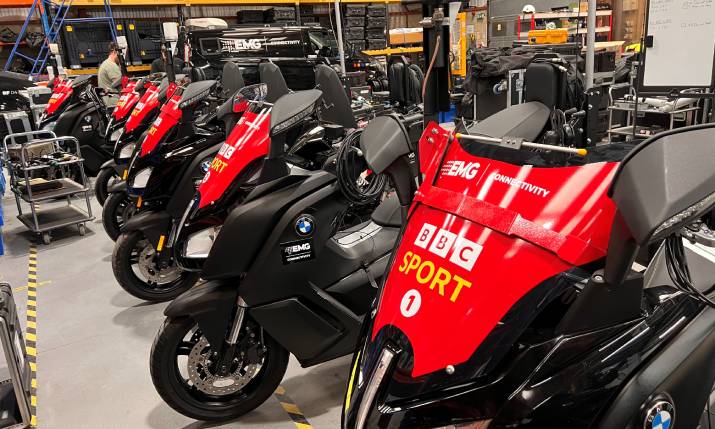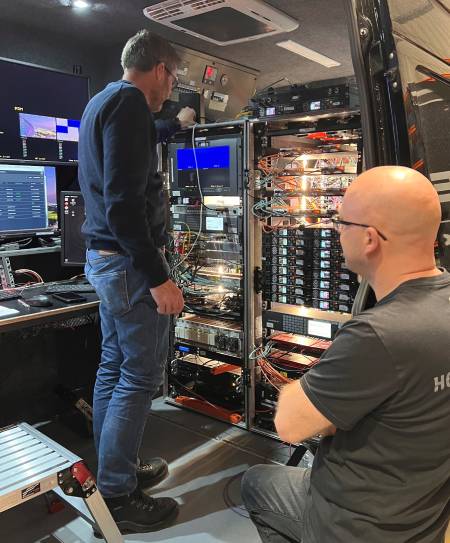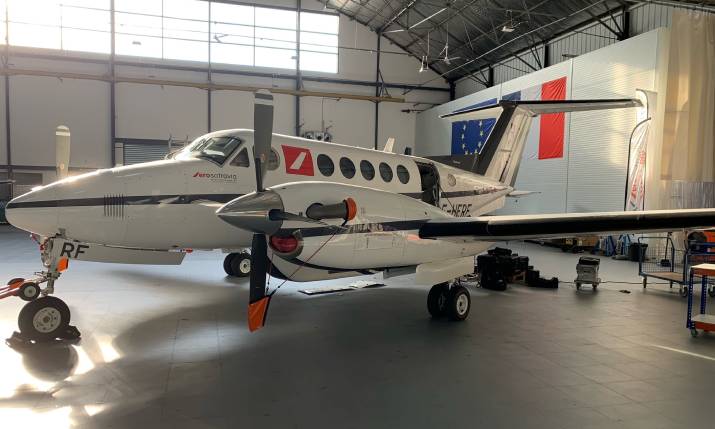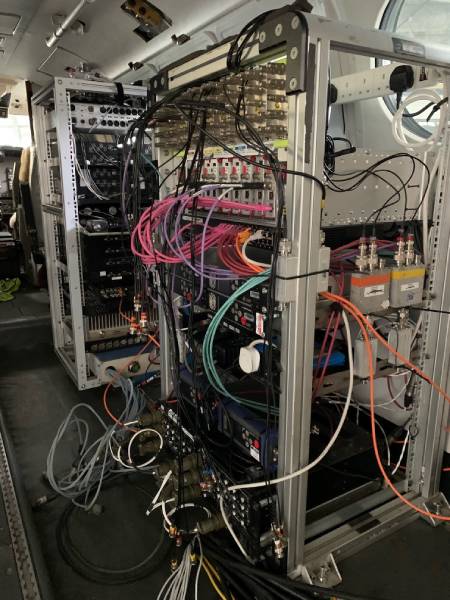To 4G, or not to 4G: EMG on bringing the iconic 2024 London Marathon to viewers globally

EMG is deploying four bikes in a 4G transmission backup test using LiveU units for the London Marathon 2024
This weekend nearly 66,000 people will don their favourite trainers, liberally apply a layer of lubricant to body parts that are likely to chafe, and pin on their numbers for the iconic London Marathon.
Being brought to TV screens around the world in its entirety by host broadcaster, the BBC, the broadcast of this 43 year old race is being carried out by technical services provider, EMG.
The London Marathon first took place in 1981 and has become one of the most popular marathons in the world. The route takes in many of London’s best landmarks including Buckingham Palace, The Cutty Sark, Tower Bridge and Canary Wharf, and bringing it all to life is EMG.
“We do have an enhanced RF system that gives us diversity across that section of the marathon and coverage through the tunnels. And we’re going to monitor the 4G [on bikes] and see what it does in those tunnels”
This year the marathon has a reduced OB setup compared to previous years, with four rather than the previous six OBs along the route. Greg Livermore, director of technical solutions at EMG UK, explains: “The marathon is a multi-site event. This year we have large outside broadcast units at the start in Blackheath, at Cutty Sark in Greenwich, at Tower Bridge and then at the finish line on Canada Gate. EMG Connectivity is deploying single camera 4G LiveU units and interview positions out across the marathon, which should give it a different feel to previous years.”
Those units will be at Limehouse, where there will also be roving reporters, and at Blackfriars. Says Livermore: “Depending on the success of those sites, and additional tests that we are doing this year, it has the potential to grow.”

EMG’s Mark Houghton and James Halliday testing RF connectivity prior to the 2024 London Marathon
To 4G or not to 4G
Those other tests are into the reliability of bonded 4G units, he notes. “The issue that we’ve always had with any 4G or LiveU kits is the only time to test their viability for the London Marathon is at the London Marathon. At no other time do you have that number of people moving around in a cluster. The time that you want to film them is when there’s a huge mass of people that arrive in that exact location. We are testing bikes [with LiveU units] this year, as a backup to the traditional [RF] links to the aeroplane.”
In total, four bikes will be involved in the 4G backup test, which says Livermore, “will give us a good indication of how well they work. EMG Connectivity has worked hard in integrating the systems into the existing bike setup, with bespoke mounting and switchable comms.”
The most challenging aspect of the route is along the Blackfriars section of the marathon, where, “there’s a lot of tunnels and underpasses,” notes Livermore. “We do have an enhanced RF system that gives us diversity across that section of the marathon and coverage through the tunnels. And we’re going to monitor the 4G [on bikes] and see what it does in those tunnels.
“We know that [4G] works in a quiet London in our tests outside of the London Marathon, but we’re looking at what it does when [the city is] loaded with people and how the bikes perform through those sections. We’re all looking forward to seeing the results.”
Drone perspectives
New for the London Marathon in 2024 is the use of drones. There will be one at the start and one at the finish, providing those first and last mile shots to bring a new perspective to the footage, between the helicopter view and the jibs.
“The drones are a new thing for the marathon; it hasn’t been done before. There’s one at the start on Blackheath and then one in the Queen Elizabeth Gardens at Canada Gate. We’ve had hoists in those positions in previous years, but we’re hoping for a bit more movement from the drone, and they can get higher to give a more aerial shot. It’s that nice in-between the hoist and the heli, that’s what the drone gives you. And if we have some fine weather, it’s going to look spectacular.”
The drones will add to that sense of place for viewers at home watching the marathon, giving a view of the race itself and also spectacular glimpses of central London with its iconic buildings and bridges.

At the London Marathon, Aerial Camera Systems (ACS) will provide the helicopters and aeroplane with EMG Connectivity on the transmissions and ground links and BT on the backhaul connectivity
Connecting cameras
The cameras being used are Sony HDC 4300’s as standard and some Sony HDC 3500’s. Meanwhile, Aerial Camera Systems (ACS) will provide the helicopters and aeroplane with EMG Connectivity on the transmissions and ground links and BT on the backhaul connectivity.

RF equipment on board the RF relay aircraft for the London Marathon 2024
All of the inter-site feeds this year are being done as usual via satellite at BT’s main satellite earth station, Madley Communications Centre, where over 65 giant satellite dishes dominate the 63-acre site in Herefordshire.
Says Livermore: “We downlink them at Madeley, not at the finish line, because it’s just more resilient to bring those feeds down to a large dish than it is to bring them down onto another satellite truck with a small dish; it’s more resilient in terms of weather.
“Then we bring those feeds back via BT Tower and get them to Canada Gate at the finish line where the presentation scanner is. This truck brings all of those feeds together, including the bikes, the helis, any of the live view kits that are out. Its where the final programme is made.”
Meanwhile, the international feed is done at the BBC’s base in Salford. “[The BBC] takes feeds from BT Tower of all the different locations, then we also send them the bike feeds and heli feeds over fibre, to make their international programme, which gets distributed to takers around the world that have the London Marathon. So that is the only remote element, including remote commentary which is added up there as well.”
Proven technology
“We like to use proven technology that we know is going to work. By their nature, many new innovations are yet to be tested. Whilst we love to showcase new toys, we balance the roll out with the absolute need for reliability and resilience. The use of 4G in the programming for 2024 is a small step, where for important cameras it’s being used as backup system. The performance of mobile 4G systems on the largest running race in the UK is going to be interesting to see.”
The 2024 London Marathon takes place on Sunday 21 April, airing live on the BBC. The Elite wheelchairs race begins at 9.05am, Elite women at 9.25am, and Elite men and masses at 10.00am.

